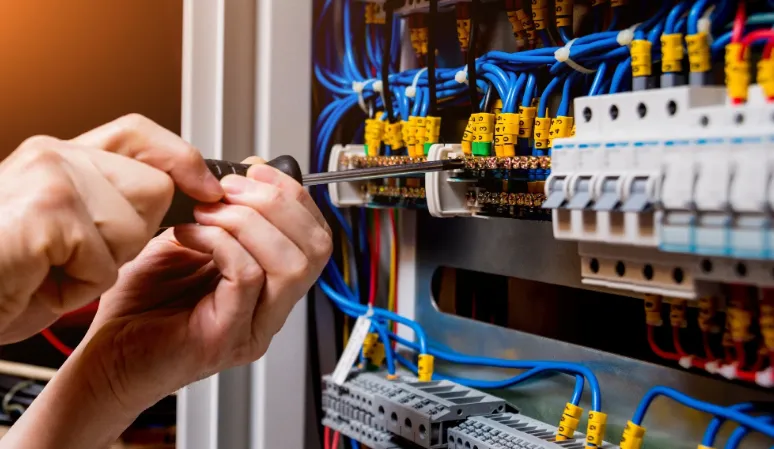How to Upgrade Your Home’s Electrical System Safely

Upgrading your home’s electrical system can improve safety, increase capacity for modern appliances, and enhance overall efficiency. However, it’s a complex task that requires careful planning and adherence to safety guidelines. Here’s a comprehensive guide on how to upgrade your home’s electrical system safely.
Contents
Assess Your Current Electrical System
Before making any upgrades, it’s crucial to understand the current state of your electrical system. Inspect the following components:
- Electrical Panel: Check if the panel is outdated or has signs of wear, such as rust or burn marks. An old panel might not handle modern electrical loads efficiently.
- Wiring: Inspect the condition of the wiring. Look for frayed or exposed wires, which can pose a fire hazard.
- Outlets and Switches: Ensure all outlets and switches are functioning correctly and are not damaged or warm to the touch.
Powerpoint Electrical in Sutton offers professional services for upgrading your home’s electrical system, ensuring safety and compliance with local regulations.
Plan Your Upgrade
Once you have assessed the current system, plan the upgrade based on your needs:
- Determine Electrical Load: Calculate the electrical load your home requires. This includes the total wattage of all appliances and devices.
- Upgrade the Electrical Panel: If your current panel is inadequate, consider upgrading to a higher capacity one, such as moving from 100 amps to 200 amps.
- Add New Circuits: To prevent overloading, add new circuits for high-power appliances like air conditioners, refrigerators, and electric ovens.
- Install Ground Fault Circuit Interrupters (GFCIs): In areas with water, like kitchens and bathrooms. GFCIs enhance safety by preventing electrical shock.
Hire a Licensed Electrician
Electrical upgrades are not a DIY project. Hiring a licensed electrician ensures the work is done safely and complies with local codes and regulations. An electrician can:
- Evaluate Your Needs: A professional can accurately determine the upgrades needed for your specific situation.
- Obtain Permits: They will handle the necessary permits required for electrical work, ensuring everything is up to code.
- Perform Safe Installation: Electricians have the knowledge and tools to safely install or upgrade panels, wiring, and outlets.
Follow Safety Protocols
During the upgrade process, adhere to safety protocols to prevent accidents:
- Turn Off Power: Before starting any electrical work, ensure the power is turned off at the main breaker to avoid electrical shocks.
- Use Proper Tools: Utilize insulated tools designed for electrical work to reduce the risk of injury.
- Wear Safety Gear: Wear rubber-soled shoes, gloves, and safety glasses to protect yourself from electrical hazards.
Upgrade Wiring and Outlets
Old or inadequate wiring can be dangerous. Consider the following:
- Replace Old Wiring: If your home has outdated aluminum or knob-and-tube wiring, replace it with modern copper wiring.
- Install More Outlets: To accommodate modern electronics and appliances, add more outlets, particularly in high-use areas like the kitchen and living room.
Test and Inspect
After completing the upgrades, thorough testing and inspection are essential:
- Test the System: Ensure all new components work correctly without tripping breakers or causing electrical issues.
- Inspect for Code Compliance: Have the electrical work inspected by a certified professional to ensure it meets all local building codes and standards.
Conclusion
Upgrading your home’s electrical system can significantly enhance safety and efficiency. By assessing your current system, planning the upgrade, hiring a licensed electrician, following safety protocols, upgrading wiring and outlets, and performing thorough testing and inspection, you can ensure a safe and successful upgrade. Remember, electrical work can be dangerous, so it’s always best to consult with professionals to protect your home and loved ones.


